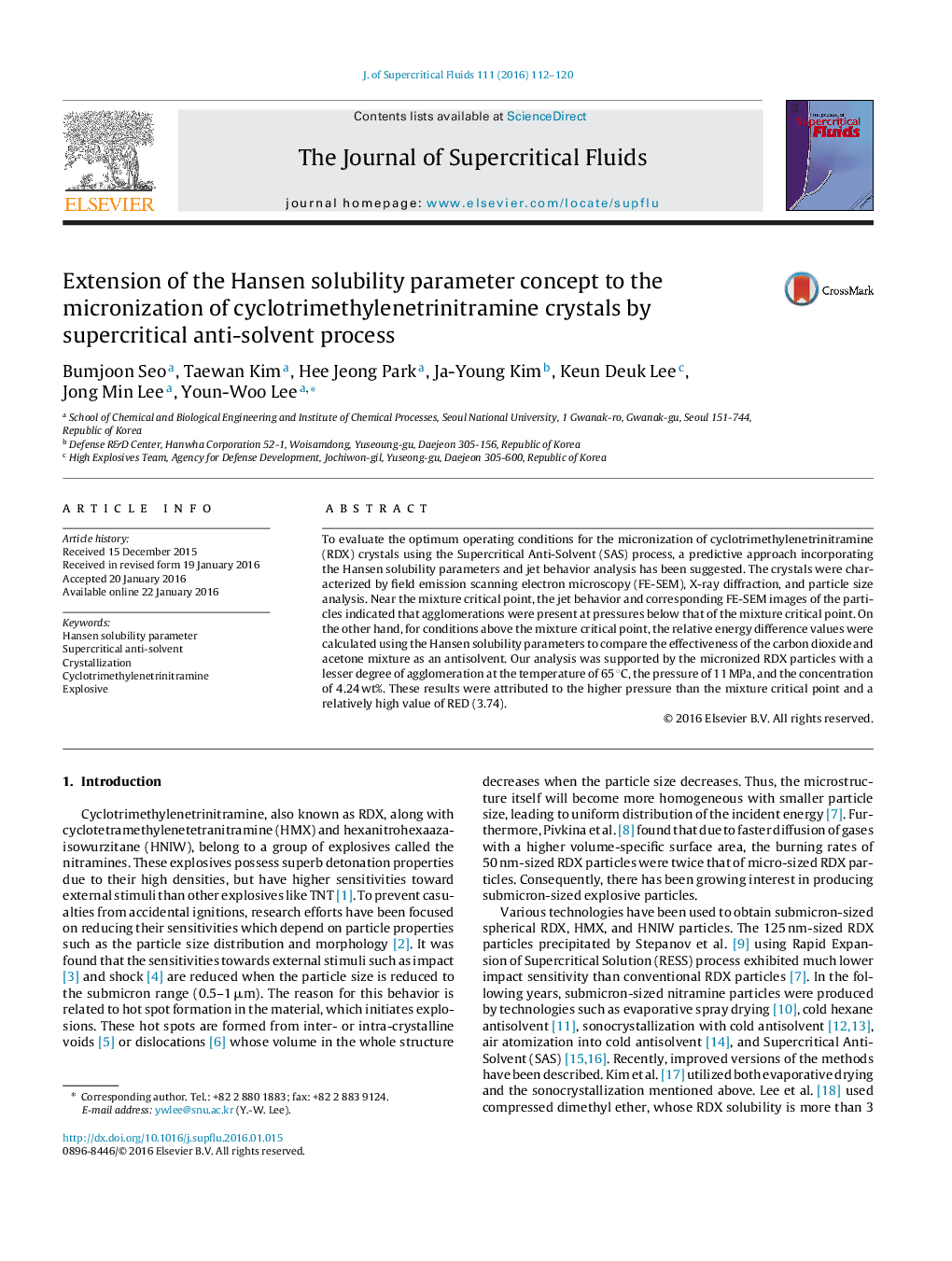| Article ID | Journal | Published Year | Pages | File Type |
|---|---|---|---|---|
| 230094 | The Journal of Supercritical Fluids | 2016 | 9 Pages |
•Interpretations were proposed for different RDX crystals obtained by the SAS process.•Solubility parameter concept was used to explain crystallization above the mixture critical point.•Phase equilibria were related to agglomeration below the mixture critical point.•Optimum values of the operating parameters for the micronization were deduced.
To evaluate the optimum operating conditions for the micronization of cyclotrimethylenetrinitramine (RDX) crystals using the Supercritical Anti-Solvent (SAS) process, a predictive approach incorporating the Hansen solubility parameters and jet behavior analysis has been suggested. The crystals were characterized by field emission scanning electron microscopy (FE-SEM), X-ray diffraction, and particle size analysis. Near the mixture critical point, the jet behavior and corresponding FE-SEM images of the particles indicated that agglomerations were present at pressures below that of the mixture critical point. On the other hand, for conditions above the mixture critical point, the relative energy difference values were calculated using the Hansen solubility parameters to compare the effectiveness of the carbon dioxide and acetone mixture as an antisolvent. Our analysis was supported by the micronized RDX particles with a lesser degree of agglomeration at the temperature of 65 °C, the pressure of 11 MPa, and the concentration of 4.24 wt%. These results were attributed to the higher pressure than the mixture critical point and a relatively high value of RED (3.74).
Graphical abstractFigure optionsDownload full-size imageDownload as PowerPoint slide
